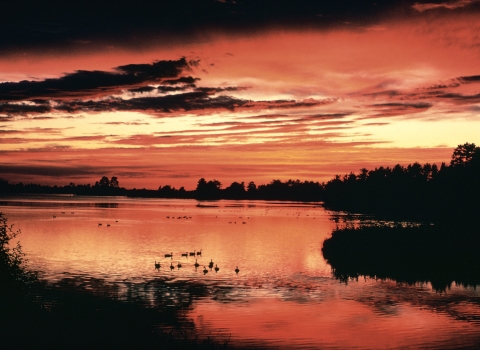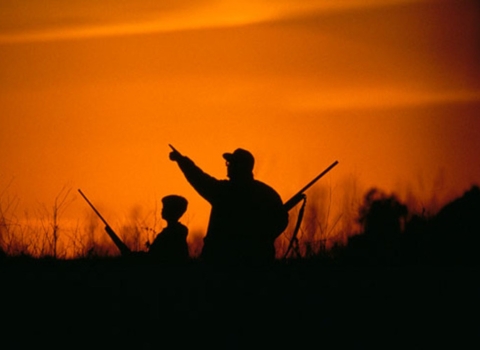Find a National Fish Passage Program project in your neighborhood.
This geospatial data set, produced by the U.S. Fish and Wildlife Service in collaboration with partners, shows projects funded under the Bipartisan Infrastructure Law Bipartisan Infrastructure Law
The Bipartisan Infrastructure Law (BIL) is a once-in-a-generation investment in the nation’s infrastructure and economic competitiveness. We were directly appropriated $455 million over five years in BIL funds for programs related to the President’s America the Beautiful initiative.
Learn more about Bipartisan Infrastructure Law . Project points contain project information compiled by partners receiving funding. Project data points include project specific information such as geographic location, funding amount, project descriptions, partner information, and links to project websites.
What is a barrier? A barrier is anything that prevents or reduces the ability of aquatic species to move where needed to survive and complete their life cycle. This includes physical barriers, such as dams, culverts, and levees, and environmental barriers such as excess sediment, poor water quality, and temperature or flow variations.
What are Multiple Barrier Projects? Multiple Barrier Projects include more than one barrier funded under one project. Some Multiple Barrier Projects have specified data to the scale of the individual barriers, others have not specified data beyond the project scale. Data will be updated as information becomes available.
$200 million dollar investment in rivers, wildlife, and communities.
Clean free-flowing waterways are vital to wildlife, people, and ecosystems. But across the country, millions of barriers fragment rivers, block fish migration, and put communities at higher risk to flooding. The Bipartisan Infrastructure Law, signed in November 2021, includes $200 million for restoring fish and wildlife passage by removing in-stream barriers and providing technical assistance under the National Fish Passage Program. The funding is distributed over five years and delivers $38 million to 40 projects in 23 states and Puerto Rico in 2022 alone, providing a once-in-a-generation opportunity to invest in our nation’s rivers, streams, and communities.
Obsolete or poorly designed dams, culverts, stream crossings, and levees keep fish, and other aquatic species from moving freely to feed, migrate, and reproduce. These challenges put fish populations at risk, undermine the health of the rivers, and reduce fishing opportunities. These barriers also fragment aquatic habitats and are often more susceptible to flooding or drought.
Fish Passage Projects for 2022
Across the country National Fish Passage Program projects funded by the Bipartisan Infrastructure Law will help restore rivers, protect wildlife, support communities, and improve climate resilience.
The Potomac Headwaters Fish Passage Restoration will implement up to 17 fish passage fish passage
Fish passage is the ability of fish or other aquatic species to move freely throughout their life to find food, reproduce, and complete their natural migration cycles. Millions of barriers to fish passage across the country are fragmenting habitat and leading to species declines. The U.S. Fish and Wildlife Service's National Fish Passage Program is working to reconnect watersheds to benefit both wildlife and people.
Learn more about fish passage barrier removal projects, including dam removals and road-stream crossing replacements, to reconnect over 195 miles of habitat for brook trout and American eel in the headwaters of the Potomac Watershed across three states (West Virginia, Virginia and Maryland). This project is part of the Potomac Headwaters River restoration effort where other partners have been collectively working for over 15 years to reconnect high quality, limestone underlain spring fed, brook trout patches.
In Arizona the Apache Trout Recovery Fish Passage Infrastructure project will remove barriers on several creeks and replace culverts, most of which are on Tribal land. The project will help create larger populations of Apache trout in addition to re-opening access to 52.4 miles of habitat.
Across coastal Florida, Dam Removal and Stream Restoration in Florida projects will remove two dams and restore streams on the Apalachicola, Myakka, and Econlockhatchee Rivers. The projects will benefit five federally listed mussel species as well as Gulf sturgeon and Florida manatee.
The Tyonek Creek Culvert Replacement for the Benefit of Subsistence Resources project will restore access to 10.8 miles of coho salmon spawning and rearing habitat by replacing an undersized culvert on one of the largest and most important salmon streams near the village of Tyonek, Alaska.
In the Pacific Northwest the West Fork Grays River Fish Passage project will work with the Cowlitz Indian Tribe to remove derelict water intake infrastructure. The intake removal will restore fish passage to over 15 miles of upstream spawning and rearing habitat, benefiting threatened populations of winter steelhead, coho, fall Chinook and chum salmon.





